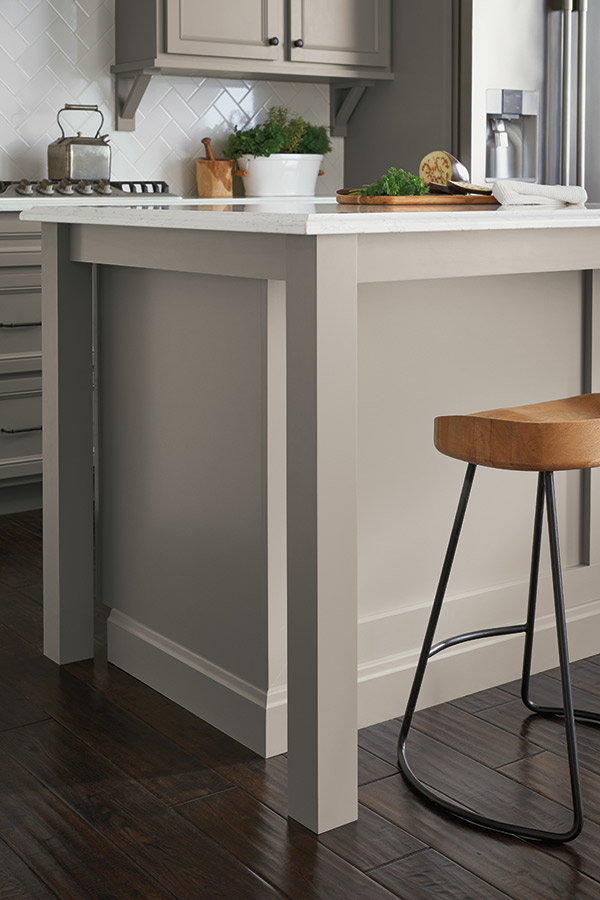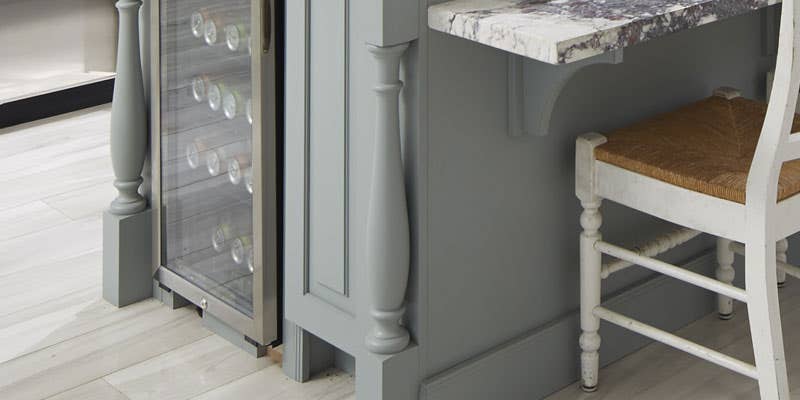Important Elements to Take Into Consideration When Choosing Legs For Kitchen Island
Selecting the proper legs for a kitchen island includes a mindful evaluation of numerous elements that can substantially influence both performance and visual allure. As we explore these elements, it becomes clear that each choice can have significant effects for the total cooking area experience.
Product Options
When selecting legs for a kitchen area island, comprehending the different material alternatives is essential for attaining both visual charm and structural integrity (Legs For Kitchen Island). The choice of product considerably influences not just the sturdiness of the island but also its general style and functionality
Metal legs, usually made from stainless steel or wrought iron, contribute a modern and industrial feeling while making sure longevity and stability. These materials are immune to wear and can support substantial weight, making them excellent for larger islands.
One more alternative is crafted materials, like MDF or plywood, which can be much more economical while still offering a variety of coatings. Nonetheless, they may not supply the same degree of security as solid timber or steel. Finally, materials such as acrylic or glass can produce a modern look, though they might need extra support to ensure security.
Inevitably, the option of product for kitchen island legs ought to align with the desired functionality and the general theme of the cooking area.
Design And Style

When thinking about style, the form and coating of the legs are essential. Conical legs can provide a feeling of agility and style, while thicker, more robust legs can communicate strength and security. Furthermore, the finish-- be it painted, discolored, or all-natural-- ought to match the cabinets and countertop products to create a unified look.
Furthermore, the layout of the legs can also reflect individual preference. Customized or attractive legs, such as those featuring elaborate makings or unique geometric forms, can act as centerpieces, adding personality and individuality to the kitchen area. Inevitably, the ideal option will certainly not only boost performance however also elevate the visual charm, making the kitchen island a standout feature of the home.
Elevation Factors To Consider
Picking the suitable elevation for cooking area island legs is important, as it straight influences both performance and convenience. The basic height for a kitchen area island normally varies from 36 to 42 inches, lining up with typical kitchen counter elevations.

It is also vital to make up customers' choices and elevations. Personalizing the elevation can make certain a comfortable experience for all relative, making the kitchen area island a more useful and satisfying area.
Weight Assistance
Guaranteeing appropriate weight support for kitchen island legs is essential for both security and capability. The kitchen island usually serves numerous objectives, consisting of cooking, eating, and additional storage space, demanding a durable support structure. When picking legs, it is essential to think about the total weight capacity needed based upon the island's planned usage and the materials that will certainly be put on it.
The selection of product for the legs plays a significant role in their weight-bearing capabilities. Solid wood, steel, and heavy-duty compounds typically give premium strength compared to lighter materials. Furthermore, the style of the legs-- whether they are right, tapered, or have a pedestal type-- can affect their capability to disperse weight successfully throughout the framework.
Always seek advice from the producer's requirements pertaining to tons limits to guarantee that the legs can maintain the designated weight without compromising safety and security. In recap, choosing cooking area island legs with ample weight support is necessary for producing a practical and risk-free culinary area.
Setup and Maintenance
Appropriate installation and maintenance of cooking area island legs are essential for making certain long life and security. To begin, it is important to follow the maker's standards throughout installment. This typically includes securing the legs to the space station utilizing suitable bolts, guaranteeing that the legs are degree and link lined up. Making use of a degree tool can aid protect against tottering and boost the general visual appeal of the kitchen island.
As soon as set up, normal upkeep is essential to preserve the honesty and appearance of the legs - Legs For Kitchen Island. For wooden legs, periodic cleansing with a wet cloth and application of suitable timber click this site polish can protect against dampness damage and preserve their coating. Steel legs may need a mild cleansing remedy to get rid of oil and gunk, complied with by a completely dry towel to avoid corrosion formation
Additionally, evaluate the legs regularly for signs of wear or damages, such as cracks or loosened joints. Tightening up screws or bolts as needed can likewise prolong the life expectancy of the legs. By adhering to these installation and maintenance techniques, home owners can guarantee that their kitchen island continues to helpful site be durable and aesthetically appealing for several years to come.
Final Thought

Aesthetic comprehensibility is paramount in choosing the design and design of legs for a kitchen area island, as these components substantially affect the overall atmosphere of the room. Conical legs can give a feeling of lightness and style, while thicker, a lot more robust legs can convey strength and security.Selecting the appropriate elevation for kitchen area island legs is vital, as it straight affects both functionality and comfort. In recap, selecting cooking area island legs with ample weight assistance is important for developing a secure and practical culinary area.
In verdict, picking legs for a kitchen area island demands mindful factor to consider of various factors, including product choices, design, elevation, weight assistance, and installment.